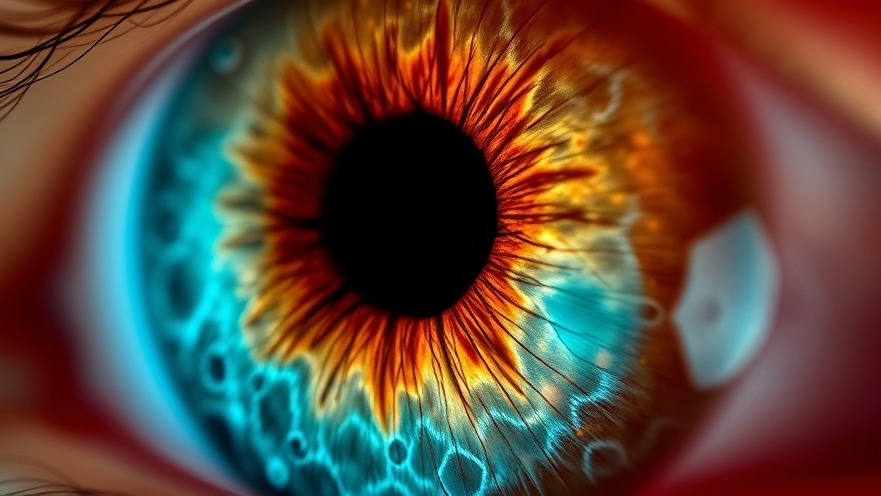
Revolutionizing Vision Restoration: The Promise of Pig Retinal Cells
Researchers have recently made a groundbreaking advancement in the field of ophthalmology by developing lab-grown pig retinal cells that could play a critical role in treating retinal diseases. The advancement comes as part of ongoing efforts to combat the often devastating consequences of degenerative diseases that lead to vision impairment or blindness.
Understanding the Retina and Photoreceptor Cells
The retina is a complex structure within the human eye, composed of various cell types that work together to process visual information. Among the most crucial of these cells are the photoreceptors, which initiate the visual cycle by detecting light. Damage to these cells can arise from a variety of factors, including genetic disorders, injury, or degenerative changes, leading to conditions like retinitis pigmentosa and age-related macular degeneration.
“Stem cell replacement therapy using lab-grown photoreceptors is emerging as a promising strategy,” says Dr. David Gamm, director of the McPherson Eye Research Institute at UW–Madison. “However, human cells are often quickly rejected when transplanted into other species, complicating the assessment of their therapeutic potential.”
The Role of Pigs in Research
Pigs have been identified as a suitable model for studying human retinal diseases due to their anatomical and physiological similarities. Pig and human retinas share key features, allowing researchers to test human-equivalent photoreceptors without the significant rejection risks faced in interspecies transplants.
The recent study published in Stem Cell Reports highlights the ground-breaking creation of lab-grown pig retinal organoids for the first time. These organoids, which mimic the cellular architecture of the retina, have shown promise in replicating cellular interactions found in human retinal tissues. Graduate student Kim Edwards from the Gamm Lab, who contributed significantly to this study, notes that “this is the first comparison of human versus pig retinal organoids, establishing a new benchmark for understanding retinal function across species.”
Creating High-Quality Retinal Organoids
Research involved obtaining high-quality pig pluripotent stem cells, crucial for generating organoids. The technique used to encourage differentiation of these stem cells into functional retinal cells was adapted from established methods focused on human cells, taking into account the shorter gestational period of pigs.
This innovation in organoid development not only yields significant insights into retinal diseases but also showcases collaborative efforts among several key research institutions. The approach has drawn attention for employing precise gene expression techniques, using tools like single-cell RNA sequencing to characterize the types of cells present within the organoids and their functional properties.
Transplanting Pig Retinal Cells into Animal Models
The next critical step in this research is to assess whether these lab-grown photoreceptors can effectively integrate into damaged retinas when transplanted into pigs. Preliminary results show promise for establishing connections, which could eventually lead to restored vision. The research is not only valuable for animals but also paves the way for future human clinical trials aimed at treating blindness.
This collaboration illustrates how innovations in cellular biology can drive medical science forward. By supporting studies addressing retinal degenerative conditions, researchers aim to design effective treatments that could alleviate the suffering of millions worldwide.
The Bigger Picture: Implications for Human Health
As we witness the convergence of stem cell science with innovative animal modeling techniques, the impact of such research on human healthcare becomes evident. Millions are affected by retinal diseases globally, and advancements like these provide hope for new therapeutic interventions.
Experiments conducted in parallel by researchers at Université de Montréal also highlight the evolution of treatments for retinal degeneration, with successful retinal transplants bringing visual restoration to blind mini-pigs. Strategies used by various teams showcase the need for diverse methods to tackle the challenges posed by retinal diseases effectively.
Moving Forward: The Path to Clinical Application
With ongoing challenges regarding tissue compatibility and transplantation efficiency, researchers must persist in refining techniques to improve the success rates of these groundbreaking procedures. As more data emerges from animal studies, the validity of these treatments will guide the development of human clinical applications designed to treat age-related macular degeneration, diabetic retinopathy, and more.
“Our findings affirm the potential to leverage animal models like pigs to explore retina restoration therapy,” emphasizes Dr. Gamm. “What begins in the lab could revolutionize patient care if we follow through with rigorous clinical validation.”
Call to Action: Future Treatments in Sight
As healthcare practitioners, staying informed about advancements in retinal therapy provides an opportunity to enhance patient care. Engaging with ongoing research and considering the implications of these findings on treatment methodologies can empower you to offer the best options for patients struggling with vision loss. Follow developments in stem cell therapies as they promise to reshape the landscape of ocular medicine.
 Add Row
Add Row  Add
Add 






Write A Comment